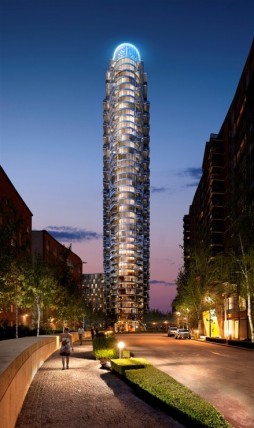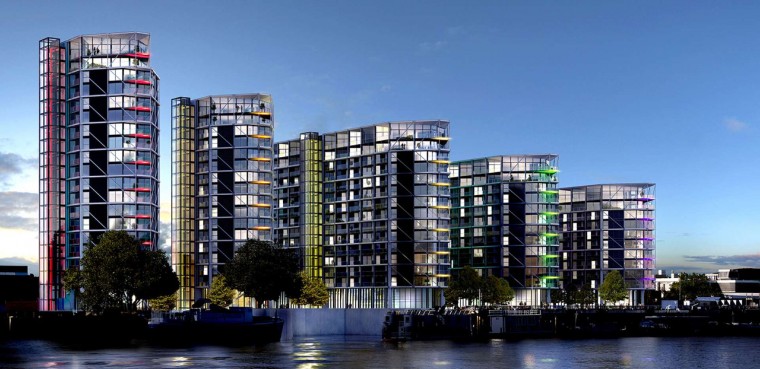Look across the London skyline and landmark buildings speak globally of what it is to be in the capital – St Paul’s, Tower Bridge, St Pancras Station and the Houses of Parliament – but also architecture of the modern era, Lloyd’s of London, Tate Modern and The Gherkin perhaps. Their diversity reflects both the city’s long history, but also its distinctively chaotic energy and charm.
Yet that skyline is set to change radically over coming years. Incredibly, some 250 or so tall buildings, of 20 storeys or more, are currently consented or proposed across London. It’s a number changing almost daily, with some 113 approved for planning and 70 having started construction over the last year. Some 30 of the 250 will be more than 40 storeys high, 19 of them over 50. London, it seems, is set to take bold strides towards a more sci-fi aesthetic.
“All cities have to regenerate and refresh, and high-rise buildings are increasingly doing that for London,” says Bill Price, director of building structures at WSP Group, engineers behind The Shard, perhaps the most internationally recognised of recent new buildings. “It’s hard for engineers to drive all quality issues, but what’s key about these new buildings is their quality. It is important they’re good buildings and that attention is paid to the space and building on the ground around them, for example, to gardens and to civic amenities. But the evidence is these proposed buildings are being funded and are happening.”

The 43-storey, £110-million Providence Tower is just one of the capital’s many high-rise developments
In the past ghettos of gated developments may have failed to deliver for local stakeholders, but there is new awareness and understanding of the issues among property and construction, says Paul Toyne, group head of sustainability at Balfour Beatty, winner of the £110-million contract for the 43-storey Providence Tower development.
“Of course, there are sensitivities around the impact of high-rise developments on the skyline, but if the decision is made to progress with a scheme, then the associated infrastructure surrounding it is vital; this includes transport links and other facilities such as retail. In that sense, the build can create investment opportunities to regenerate the area. Ultimately, for it to work, the whole community needs to benefit,” says Dr Toyne.
Certainly the scope of the many proposals looks set to reimagine London’s essential character, for good or ill. The Nine Elms area is currently a forest of super-cranes building, say critics, less than super towers, as is Canary Wharf, with other hotspots being the City, Southwark and generally along the south bank of the Thames. And, for the moment, Londoners appear broadly divided about the developments. According to a poll conducted last year by NLA, an independent forum on building in London, 40 per cent of respondents did not agree with the statement “there are too many tall buildings in London”, while 34 per cent did.
What the same poll showed is that Londoners are impressed by towers; 46 per cent said tall buildings have made London look better, with 25 per cent disagreeing. Certainly some interested parties have argued that the rush to iconoclasm helps underpin the city’s reputation, not only as the national capital, but as a global capital. Both in terms of image and office space, they say, this will help attract major international businesses too, although a majority of the proposed towers are residential and, it is suspected, like the Tower at One St George Wharf in Vauxhall, which is currently the UK’s highest residential tower, will be at the luxury end of the market.
Others say, not without opposition, that with London’s population growing at twice the rate of the rest of the country, increasing densities is the only way to conserve land area and so the pressure to build tall is hard to resist.
But, as might be expected, not everyone is pleased by this vision of a city given a Blade Runner makeover. Rather it is becoming a subject of great controversy. Campaign groups, such as Skyline, are finding growing support, backed by architect heavyweights the likes of David Chipperfield, David Adjaye and Eva Jiricna. “We’re not anti-towers, so much as anti-bad towers in the wrong location,” argues Barbara Weiss, one of Skyline’s co-founders, along with her husband, a property developer who might well be expected to be on the other side of the debate.
“The question isn’t just how they look, but how they look from miles away,” says Ms Weiss. “The fact is there is very little master-planning going on, as there has been in New York, to give a feeling of continuity and consistency.”
Ms Weiss is clearly not exaggerating when she says that the capital’s proposed skyline “gets a lot of people very angry” and could prove to be a key issue in the election of London’s next mayor.
So could or should the construction industry be doing more to communicate the benefits and importance of high-rise development to the media, general public and planners? Dr Toyne thinks not. “It isn’t the role of the industry to single out one particular element of our built environment. Instead, it is important that construction can demonstrate it’s a modern industry with fit-for-purpose solutions that not only produce high-class quality infrastructure, but also do so in such a way that the local and national economy benefits as well,” he says.
As WSP’s Mr Price concludes, towers should not be constructed without long and serious consideration. “Since such tall buildings today are stronger than those built in the past, they are designed and made to last. These are towers that are likely to be there for centuries – you can say, in effect, they will be there forever.”
That thought puts a new perspective on what is, both sides concede, an incredibly complex debate. Building never has been without controversy. But it looks like London’s new construction scene is set to become more a battleground – just who does London’s skyline belong to?




